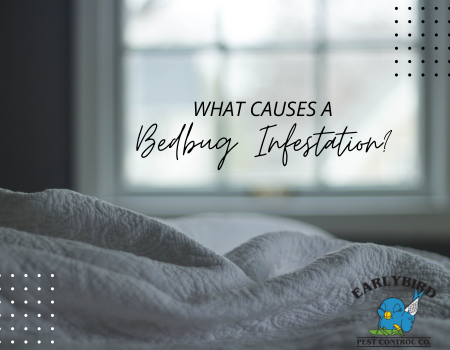Bed bugs, the tiny nocturnal pests that feed on the blood of humans and animals, have become a pervasive nuisance in many households and public spaces. Understanding the causes of bed bug infestations is crucial for prevention and effective eradication. In this article, we will delve into the various factors that contribute to the rise of bed bug infestations, shedding light on how these stealthy invaders find their way into our homes.
Understanding Where Bed Bugs Come From
- Travel and Movement of People
One of the primary causes of bed bug infestations is the frequent movement of people. Bed bugs are excellent hitchhikers, clinging onto luggage, clothing, and personal belongings as individuals travel. Hotels, motels, and public transportation systems can serve as hotspots for bed bug transfer. Once transported to a new location, these pests quickly establish themselves, making it essential for travelers to be vigilant and take preventive measures to avoid bringing bed bugs home.
- Used Furniture and Secondhand Items
Bringing used furniture or secondhand items into your home can unknowingly introduce bed bugs. These pests are skilled at hiding in the seams and crevices of furniture, mattresses, and other household items. When purchasing pre-owned furniture or accepting hand-me-downs, it’s crucial to thoroughly inspect and, if necessary, treat the items to prevent the introduction of bed bugs into your living space.
- Infested Clothing and Bedding
Bed bugs are not confined to beds; they can also infest clothing and bedding. Infested clothing left unattended can serve as a bridge for bed bugs to move from one area to another. Regularly washing and drying clothing at high temperatures can help eliminate any bed bugs present. Similarly, using protective covers on mattresses and pillows can act as a deterrent, preventing bed bugs from establishing themselves in these areas.
- Lack of Awareness and Education
A lack of awareness about bed bugs and their behavior contributes to the spread of infestations. Many people may not recognize the signs of a bed bug infestation, leading to delayed intervention. Educating individuals about the appearance, habits, and potential hiding spots of bed bugs is essential for early detection and swift action. Public awareness campaigns and educational programs can play a significant role in curbing the spread of bed bugs.
- Multi-Unit Housing and Shared Spaces
Living in multi-unit housing, such as apartments or condominiums, increases the risk of bed bug infestations. These pests can easily move between units through wall voids, electrical conduits, and shared plumbing. Additionally, shared laundry facilities and communal spaces provide ample opportunities for bed bugs to transfer from one resident’s belongings to another’s. Regular communication and cooperation among residents, along with proactive pest management, are crucial in preventing and addressing infestations in shared living spaces.
- Clutter and Poor Hygiene
Cluttered and poorly maintained living spaces create ideal hiding spots for bed bugs. Piles of clothes, stacks of newspapers, and cluttered furniture offer numerous hiding places for these pests. Maintaining a clean and organized living environment is not only essential for overall well-being but also helps in early detection and effective control of bed bug infestations.
- Ineffective Pest Control Practices
In some cases, attempts to control bed bugs using ineffective or DIY methods may exacerbate the problem. Using over-the-counter pesticides without proper knowledge and precautions can lead to the development of pesticide-resistant bed bugs. Professional pest control services with expertise in bed bug management are recommended for thorough and effective eradication.
Bed bug infestations are a growing concern, and understanding their causes is crucial for prevention and control. Vigilance during travel, cautious handling of secondhand items, regular cleaning and maintenance, and awareness about bed bug behavior are key components of effective prevention strategies. Collaboration among residents in shared spaces, along with professional pest control services, plays a vital role in eradicating bed bugs once an infestation is identified. By addressing the root causes and implementing proactive measures, individuals and communities can significantly reduce the risk of bed bug infestations and create healthier living environments.


Recent Comments